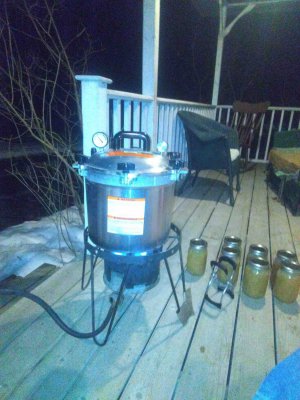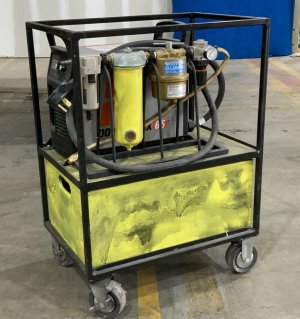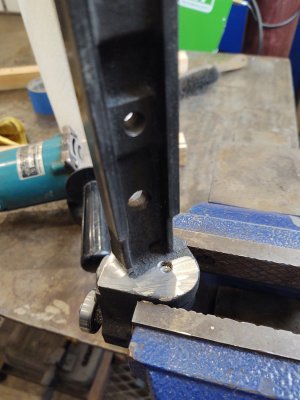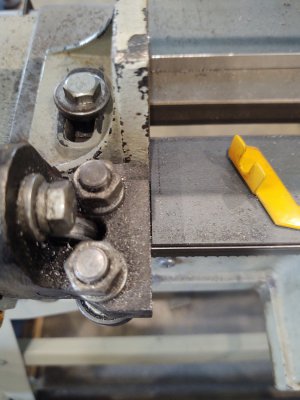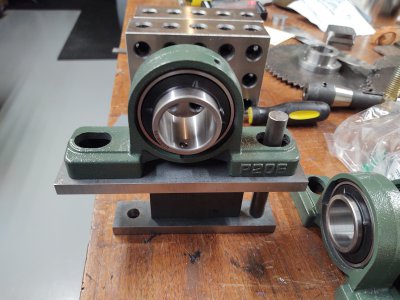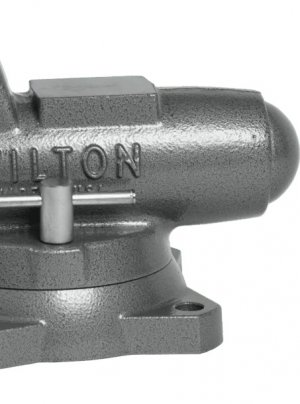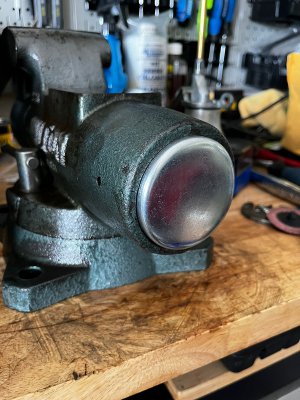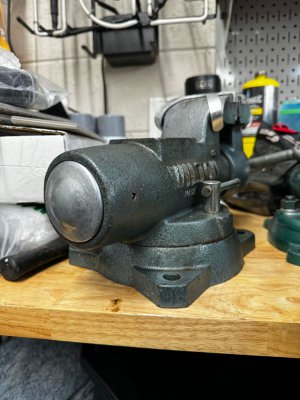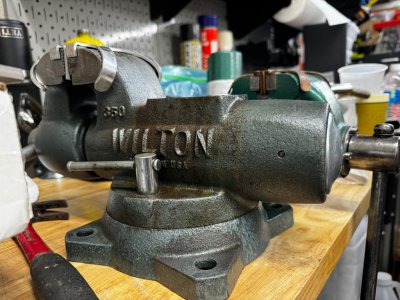So I bought this old MasterCraft Model 500 X-Y table for locating holes under the drill press.
It came mounted on a block of wood. And I thought I’d just run its center bolt through the holes in the dress press table. But something’s missing—the handle on the lower dovetail screw won’t clear the table:
I thought about buying a cast iron raw disk, but I found a guy on eBay who is selling various sizes of mild steel plate for much less. I bought a piece of 1-1/2” plate that was plasma cut to 8” square.
I mounted it in the 4-jaw. This is 11” corner to corner, so it’s probably the biggest thing the old South Bend 14-1/2 has made in decades. First, I faced off one side. I used a CNMG432 insert in a tool holder that uses the obtuse angle for facing to make a roughing pass just to make a flat side.
It was an interrupted cut and I was running the back gears. Noisy! And probably too slow. But it wasn’t as noisy as turning down a round section about half the thickness of the plate.
Also a CNMG432 insert, but it turning configuration. I was roughing at .020 per rev and depth of cut and the chips were hot and blue.
I used a CCMT insert for a finish pass, which worked pretty well for a .005 cut. Then, I drilled a 5/8 hole for the X-Y table center bolt. The round section leaves tabs for hold-down bolts.
I then turned it over and spent about half an hour indicating it in, using the hole in the middle. But I struggled to indicate on the back side of those tabs. I ended up using gauge blocks to measure the space from the face of the chuck to the round machined surface. That worked better than it had any right to. I took .020 off the face to make a flat surface, and it ended up within a couple of tenths of parallel. I used a CCMT insert and much higher speed (250 RPM) just to see what would happen. That was about 700+ sfpm in the outer interrupted cut. Worked perfectly but it was a finishing cut so I was only feeding at .004 per rev.
Then, I used a brazed carbide boring bar to create a 2” diameter by 3/4”counterbore for the X-Y table’s mounting nut. I was taking big chucks with that one—.015 feed and .050 depth of cut. That made long curls but the finish was good enough.
Finished product, except I’ve not yet drilled the holes for hold-down bolts:
Rick “$35 for the steel plate and $75 for the X-Y table” Denney



